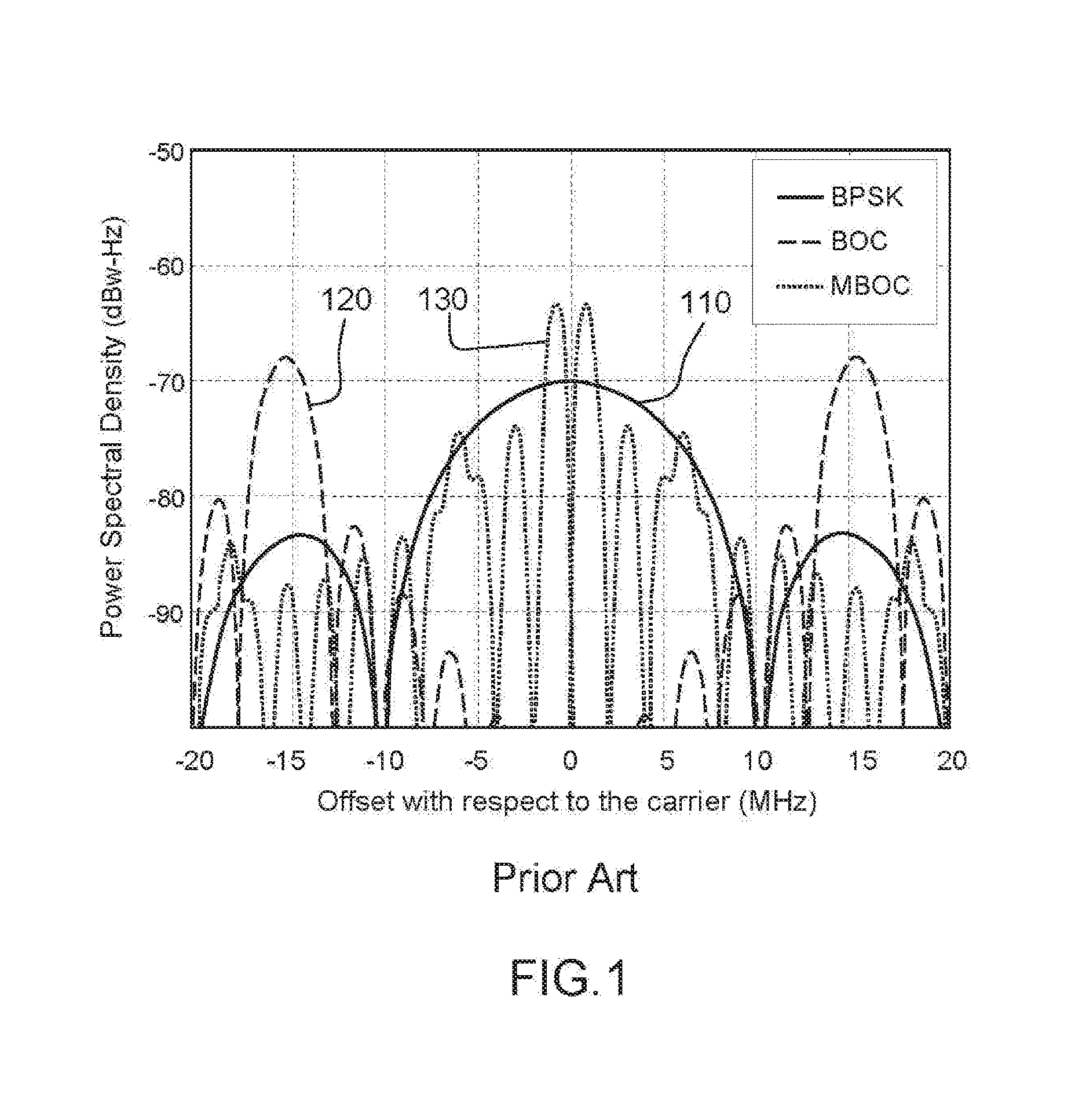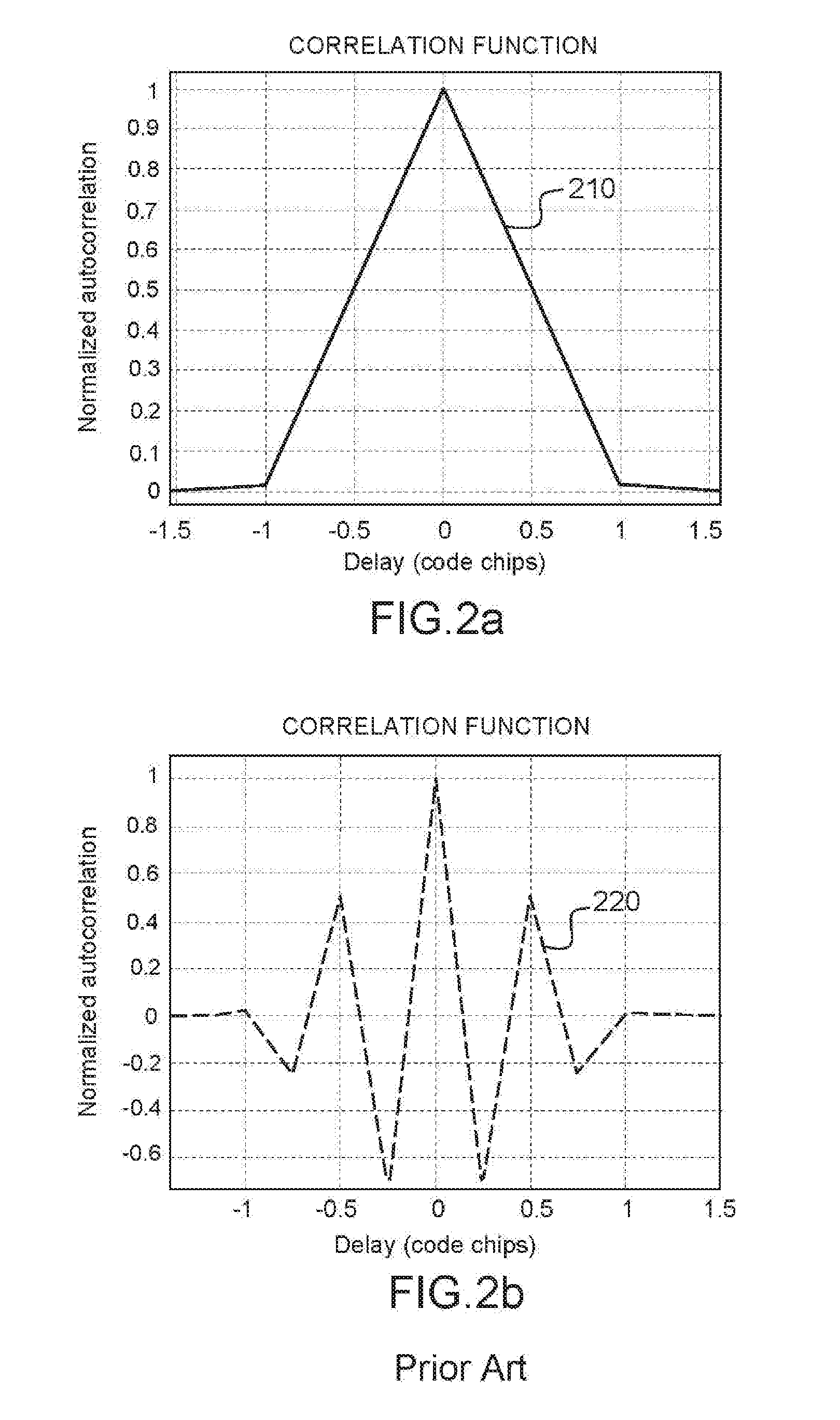GNSS receiver with an improved capability to resolve sub-carrier tracking ambiguities
a receiver and sub-carrier technology, applied in satellite radio beaconing, measurement devices, instruments, etc., can solve problems such as false pseudo range measurements, and higher than 9.7 ranging errors, so as to reduce receiver complexity and improve receiver robustness.
- Summary
- Abstract
- Description
- Claims
- Application Information
AI Technical Summary
Benefits of technology
Problems solved by technology
Method used
Image
Examples
Embodiment Construction
[0061]FIG. 1 represent exemplary spectrums of a BPSK (110), a BOC (120), and a MBOC (130) signal, according to the prior art.
[0062]In FIG. 1, spectrums are represented with respect to the carrier frequency. It can be observed that the BPSK spectrum 110 is centered on the carrier frequency.
[0063]Generating a BOC signal comprises modulating the carrier of the signal by a code and a subcarrier. BOC modulation is usually described as:
x(t)=√{square root over (A)}·d(t)·c(t)·s(t)·exp(j[2πfct+θ])
where √{square root over (A)} is the complex signal's amplitude, d(t) the data transmitted (if any), c(t) the pseudo-random noise (PRN) code signal, s(t) the subcarrier signal, fc and θ the carrier frequency and phase.
[0064]As a consequence of the modulation by the subcarrier signal, the BOC spectrum 120 is split in two side bands distributed on either side of the nominal carrier frequency, with a frequency shift equivalent to the subcarrier frequency. Each lobe of the signal can be seen as a BPSK s...
PUM
 Login to View More
Login to View More Abstract
Description
Claims
Application Information
 Login to View More
Login to View More - R&D
- Intellectual Property
- Life Sciences
- Materials
- Tech Scout
- Unparalleled Data Quality
- Higher Quality Content
- 60% Fewer Hallucinations
Browse by: Latest US Patents, China's latest patents, Technical Efficacy Thesaurus, Application Domain, Technology Topic, Popular Technical Reports.
© 2025 PatSnap. All rights reserved.Legal|Privacy policy|Modern Slavery Act Transparency Statement|Sitemap|About US| Contact US: help@patsnap.com



